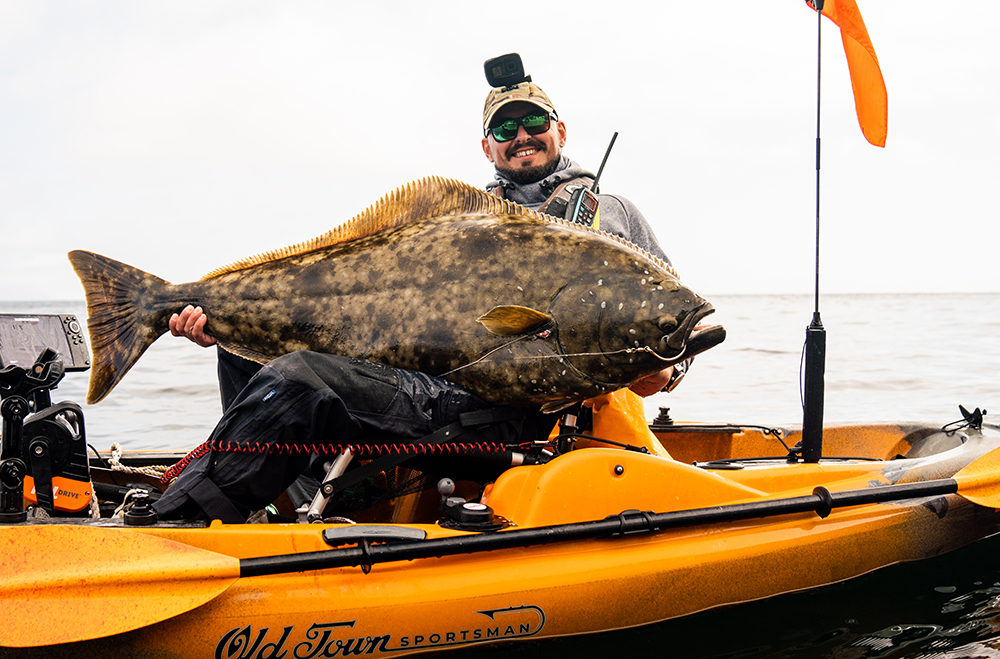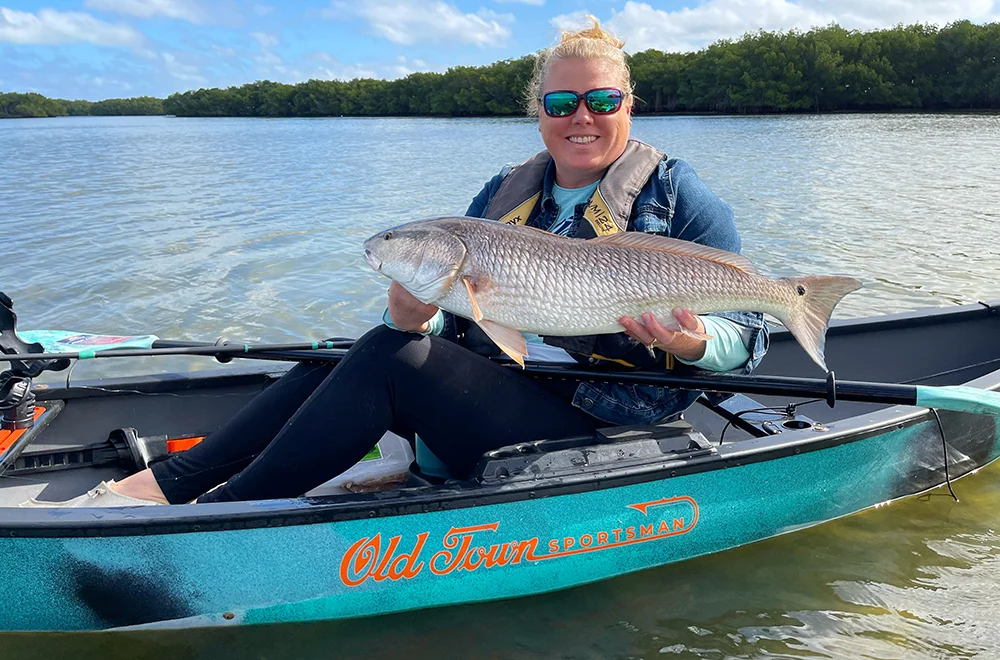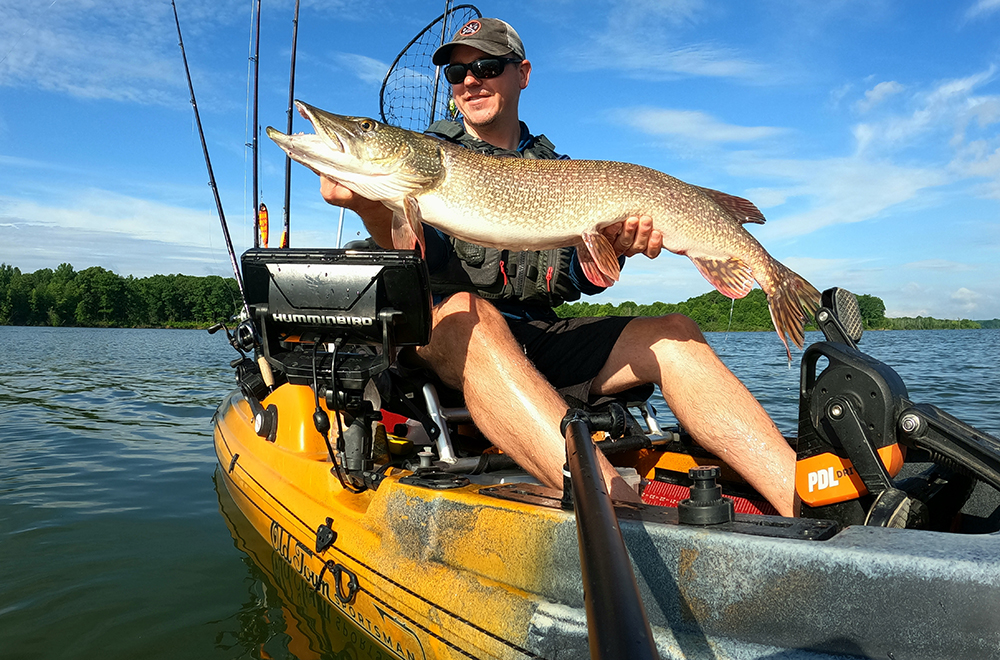Tips For Multispecies Kayak Anglers
By: Matt Stone, Pro Staff
What’s your favorite species of fish to target? Because you’ve definitely got one. We all do! Is it peacocks in the Florida canals…or tarpon on the flats.? Perhaps you’re a straight-up Texas bass angler. Is Maine home, and you’re deeply in love with those native brookies, or do you live a bit further south and it’s all stripers all the time? On the West Coast, the spice of your life might be lingcod or halibut, or salmon. Maybe you don a cheese head and hop into Green Bay for big musky. There are just so many fish out there to catch, and fishing from a kayak means that there’s nearly no type of water that’s off-limits. Which leads to the question at hand: How do you handle wanting to catch all of the fish all of the time?

It’s the conundrum of the multispecies kayak angler: On a given day, how do you decide which fish to target, and with confidence? I think that harnessing this type of fishing hearkens back to the fact that it’s all about the chase. The topic of which species to target is an alluring daydream, and one which I fall into happily and regularly. I’ve been a multispecies angler for most of my life, and regularly pursue more than a dozen types of fish in a calendar year. Here are a few tips which can give you the knowledge and confidence to try and target a variety of species throughout the year, regardless of your location.
IT’S ALL ABOUT THE MAPS
I’ll be honest: I’ve got a bit of a secret obsession with maps. This is especially true for maps that help catch fish- Google Maps, seafloor maps, contour maps, road maps, Street View, property maps, Navionics Chart Viewer; I’ll kill an entire lunch break clicking around bodies of water I’ve never even seen in person. This is my first tip: For kayak anglers, a huge part of successfully stalking various fish throughout the year is building a mental Rolodex of lakes, creeks, rivers, roads, beaches, launches, and parking lots.
For kayak anglers, a “boat launch” is anywhere on a legally fishable body of water with a few yards of semi-flat shoreline and a place to park the car. Even pedal-driven or motorized kayaks like the Old Town Sportsman Bigwater PDL 132 or the Sportsman AutoPilot 120 will work in water as shallow as 2 feet, so you can essentially launch into any depth as well! Owning a kayak cart from Malone Auto Racks will open even more options. I’ve lifted my kayak over guardrails, walked it through forests, and pulled it up and down staircases to try new spots and chase new fish. The old adage is true: knowledge is power. For multispecies anglers, it gives you something else that’s quite valuable: options. Once you build your knowledge of launches, you’ll find that there’s almost no time of year or weather conditions that can keep you out of the yak.

If you’re not sure where to start, try Google Maps and the free Navionics Chart Viewer. I typically begin on Navionics, learning about the infinite channels, bumps, humps, points, and drop-offs that make up my local shorelines, lakes, and rivers. Once you see an area that looks intriguing, hop over to Google Maps and start poking around for boat or shore launches. Navionics does show major boat ramps, but if you’ve kayak fished for a while you know there are dozens of launches that don’t show up on traditional maps. Google StreetView will get you up close and you’ll see gates and fences, parking spots or pull-offs, and the ramp itself so you can be prepared to bring your kayak cart if necessary. You’ll be surprised at how many launches are around that you never even knew existed!
Knowing many local launches can dramatically change your approach to a weekend of fishing. Let’s say there’s a strong west wind forecast during peak striper season - rather than switching to pursue trout in a protected woodland creek, what if you knew a launch that put you safely on the leeward side of a great saltwater cove? Similarly, if you like to fish inshore coastal waters but conditions are brutal, you won’t think twice about altering your plan to tangle with creek bass in more protected waters. It all comes down to having that mental Rolodex. With a strong knowledge of local species and launches, you’ll never be out of the game and will confidently fish in nearly any conditions.

BUY MORE TACKLE
I know…we all like this one. Financial pain aside, it makes sense: Catching different fish means you’ve got to have the right tackle. However, there are ways to do this which can fit nearly any budget. It’s all about research. I’d recommend reading up on simple yet effective lures which work for a variety of fish. Think spoons, fluke-style soft plastic, and simple topwater poppers or spooks: they will catch fish nearly anywhere! Take a simple Kastmaster: bass, trout, panfish, pike, and nearly any other fish will hit one. If you get a kit online with various sizes, even smaller saltwater gamefish can be had. Then, on a Saturday morning when you’ve got two hours to kill with no particular target species, these traditionally effective lures can give you all the confidence you need to get casting.
When it comes to rods and reels, one of my favorite recent purchases was a $150 ultralight combo. Having that on hand not only made me a more active multispecies angler, but it also made panfish a whole lot of fun. Panfish hit at all times of the year, but it’s not going to be too much fun wrenching up a yellow perch with a Saragosa 6000 on an 8-foot heavy Daiwa rod. Having an ultralight setup handy makes even bluegill…yes, bluegill…fun to battle when there’s no other game in town or when you want to throw something simple and see what bites.
Similarly, you’ll want rod and reel combos that work in numerous situations. A 3000-size reel on a 7-foot 6-inch medium action rod will catch everything from largemouth to snook. There have been times I’ve wanted to try a new location or a new style of fishing, but I thought too narrowly about my quiver and eliminated options without realizing my setups could handle them. As a multispecies angler, you’ve got to have an open mind about what your gear can do, and where your kayak can go. Combining those two qualities will keep your options open.

ENJOY THE CHASE
Multispecies angling isn’t always about breaking a personal best (PB) or wrestling giants in exotic locations. It’s about the chase: the sound of our kayak cutting through new water, the tug from a species of fish which, until that moment, we’d only ever seen in pictures, the satisfaction of doing the research, reading maps, tying on new lures, and simply landing fish. Truly, it’s about the love of angling, and of doing it from our little plastic boats.
I’ve spent 8 different trips over the past 2 springs in my kayak in search of a pike in Connecticut. I haven’t caught a single one. Heck, I haven’t even seen one! I’ve caught pike, sure. But not in these waters, from this kayak, with these lures. But ask me what I’m pumped about doing this Sunday…chasing pike. What have I been doing all week? Reading depth maps, old fishing reports, articles on pike spawning habits, lure reviews, pouring over YouTube videos. Absorbing everything I can about pike in my local waters. Enjoying the chase. Why? Because it’s late winter and they’re the hottest thing going now, because if pike doesn’t work out I’ll have my ultra-light ready for some yellow perch, and because that’s what multispecies fishing is all about. We shift our targets, try new things, buy more tackle than we should, drag our kayaks all over creation, and fail more often than not. And we love every minute of it.






